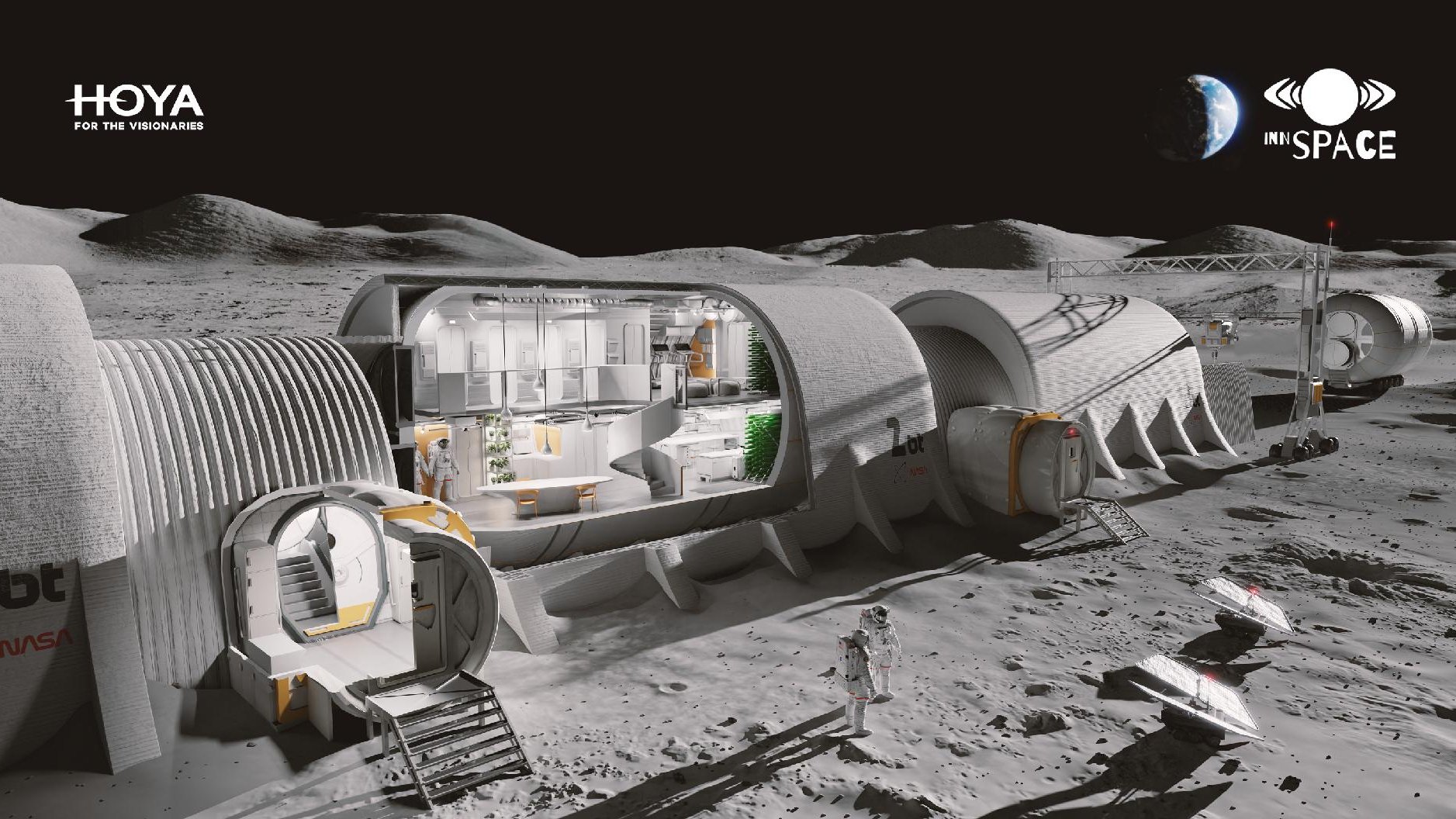Innspace's 4th Place in the Moon Base Design Contest

Innspace team members designed a Moon base made with the use of 3D printing, with algae as an important component of life support systems.
Working as part of the Innspace team was Małgorzata Popiel, a student in the Faculty of Law and Administration at Adam Mickiewicz University in Poznań and also a graduate of the Faculty of Mechanical Engineering at the Poznań University of Technology, where she had studied biomedical engineering. In projects she is mainly responsible for social, legal and management issues. The second Poznań resident involved in Innspace is aeronautical engineer and flight instructor Cyrus Sidor.
This was not the team's first success. Earlier ones include the Gold Winner title in the Future Mars Life Design Competition in China or 5th place in the Mars Colony Prize Competition in the USA. "Our team has unique skills. Apart from the fact that our group comprises specialists in 14 different areas, such as architecture, robotics, medicine or even law, many our members have also experience as analog astronauts. So we try to utilise this interdisciplinary background and participation in missions for the purposes of our projects," Innspace team leader Justyna Pelc says.
The team decided to locate its habitat in the area near Shackleton crater at the lunar south pole. This is one of the most interesting spots on the Moon, because it has places illuminated by the Sun almost all the time and places where the light never reaches. A mix of specially selected microorganisms, including bacteria, cyanobacteria and microalgae, serves to treat wastewater and remove other waterborne pollutants. Furthermore, microalgae in the form of wall panels in each room provide additional oxygen as well as visual impressions. The team used lamps emitting not only visible light, but also infrared and UVA and UVB light to better imitate sunlight.
The Innspace team members are: Justyna Pelc, Piotr Torchała, Magdalena Łabowska, Beata Suścicka, Łukasz Sokołowski, Małgorzata Popiel, Hubert Gross, Arkadiusz Kołodziej, Ewa Borowska, Aleksandra Wilczynska, Michał Garus, Cyrus Sidor and Marcin Zieliński. Project partner is Hoya Lens Poland.
Project visualisations and the final report can be found on the drive:
https://drive.google.com/drive/u/3/folders/1c3QJ1ih6zAx_ZTQBjSnq8MhMV0PCfqy1
For more information about the team please visit:
https://www.facebook.com/innspaceteam
See more

Networking Workshop at Grow in Poznań - International Conference Supporting Entrepreneurship and...

Grow in Poznan - International Conference Supporting Entrepreneurship and Professional Skills Development

The Days of Paweł Edmund Strzelecki




